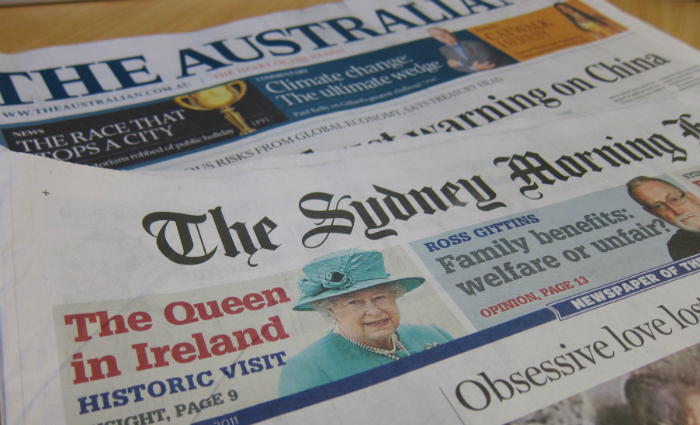
Australia’s two biggest newspaper companies plan to be printing in digital by early next year, but are pursuing different approaches to utilising the technology.
News Corp Australia plans to begin printing small newspaper runs on digital printers, while Fairfax will install digital inkheads on its existing newspaper presses.
News Corp production and logistic national director Geoff Booth says the publisher plans to begin pilot production of 2000-3000 copies a day of the Melbourne Herald Sun and Sun-Herald at its Brisbane printing plant for Queensland distribution.
Currently the newspapers are transported around the country by air or road to meet interstate demand for News’ most popular titles and Booth says printing it locally would cut costs.
[Get news first: Subscribe to ProPrint daily newsletter]
The Brisbane pilot is likely to use a Kodak Prosper 5000 inkjet printer after Kodak and manroland was named its preferred partner after winning a competitive tender earlier this month to provide the equipment on the back of their partnership agreement in April, though other compaines are still in the frame.
Booth says the terms of the deal are still being negotiated but that the press giants will provide the newest technology and a roadmap for the future.
“Digital printing would be most useful for us in regional areas but we need to learn about the technology firsthand – what it can do, what its consumables and maintenance costs are – and it is easiest to do that in a metro location,” he says.
Booth says using conventional newspaper presses to produce short runs is not economical due to plate costs, long makeready times and waste.
He says the printer will take about three hours to complete the job. News Corp is considering also using it to print overseas titles like The Times and Wall Street Journal to keep it busy for longer.
“This will be a great thing for the whole industry and will hopefully keep us in print for longer,” he says.
While Fairfax has ongoing internal discussions about adding digital printers, it is planning to add digital inkheads to its existing newspaper presses to print variable data by early next year.
Fairfax printing and distribution group director Bob Lockley says Kodak and manroland have submitted a proposal to provide the inkheads but the recent printing plant rationalisations mean a decision is not yet made.
“This technology is already used in Asia and I think its potential is very attractive for our newspapers in being able to personalise content,” he says.
[Related: Newspapers in flux]
Kodak prepress business manager Rob Mollee says adding inkjet heads, such as the Kodak Prosper S30 and S20, to newspaper presses allows publishers to quickly publish lottery numbers, promotions, QR codes and local and personalised advertising and addressing within the webfed printing process, allowing unprecedented personalised value adds to attract readers.
It could also print up-to-the-minute news, weather and sport results readers would usually go online for, and could give a personalised code to print copy buyers they can use for premium online access. Newspapers could also innovate the hard copy with embellishments and translucent inks
“It’s easy to do with inkjet as part of the printing process and you don’t have to slow the press down, everything can be done on the fly in one pass,” he says.
“Ads could vary by location and even for specific reader profiles from market research to make ads more targeted and relevant.
“This adds great value for advertisers as they can be a lot more focused and effective with their campaigns.”
Mollee says publishers could nominate pages where the variable content will appear and sell ads on them at a premium to advertisers.
“These are going to be eyes-on pages, everyone will go to them because they have up-to-date content they want to read,” he says.
“Newspapers are always trying to find ways to increase revenue and this could stop the slide in circulation and get interest in print back again.”
However, Booth says News Corp has had less advanced capability, to print lucky numbers and codes, on its presses for more than five years and is not interested in taking it further.
“We have probably used it twice in all that time. There is just no business case for it,” he says.
Comment below to have your say on this story.
If you have a news story or tip-off, get in touch at editorial@sprinter.com.au.
Sign up to the Sprinter newsletter
